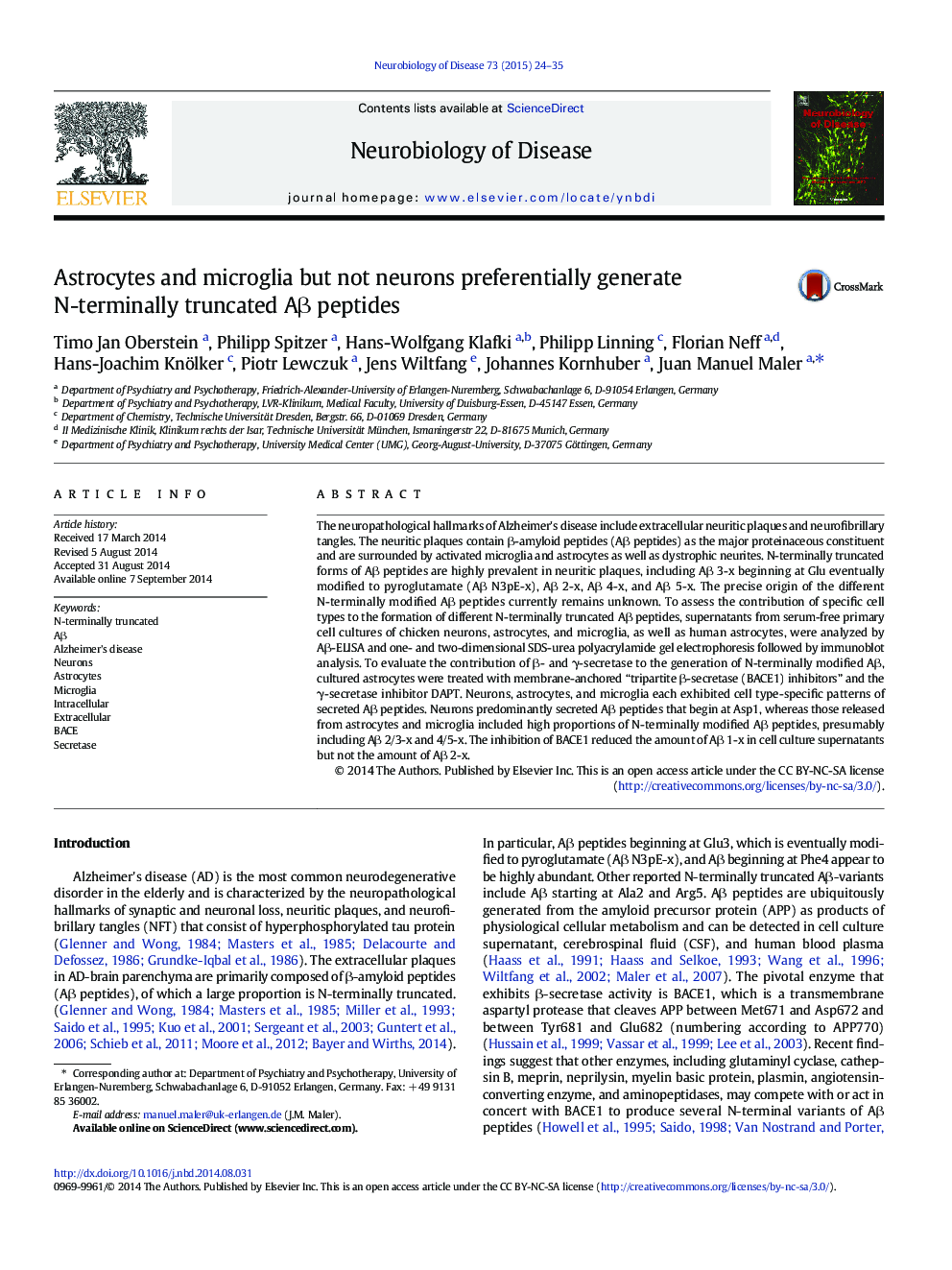| Article ID | Journal | Published Year | Pages | File Type |
|---|---|---|---|---|
| 6021667 | Neurobiology of Disease | 2015 | 12 Pages |
Abstract
The neuropathological hallmarks of Alzheimer's disease include extracellular neuritic plaques and neurofibrillary tangles. The neuritic plaques contain β-amyloid peptides (Aβ peptides) as the major proteinaceous constituent and are surrounded by activated microglia and astrocytes as well as dystrophic neurites. N-terminally truncated forms of Aβ peptides are highly prevalent in neuritic plaques, including Aβ 3-x beginning at Glu eventually modified to pyroglutamate (Aβ N3pE-x), Aβ 2-x, Aβ 4-x, and Aβ 5-x. The precise origin of the different N-terminally modified Aβ peptides currently remains unknown. To assess the contribution of specific cell types to the formation of different N-terminally truncated Aβ peptides, supernatants from serum-free primary cell cultures of chicken neurons, astrocytes, and microglia, as well as human astrocytes, were analyzed by Aβ-ELISA and one- and two-dimensional SDS-urea polyacrylamide gel electrophoresis followed by immunoblot analysis. To evaluate the contribution of β- and γ-secretase to the generation of N-terminally modified Aβ, cultured astrocytes were treated with membrane-anchored “tripartite β-secretase (BACE1) inhibitors” and the γ-secretase inhibitor DAPT. Neurons, astrocytes, and microglia each exhibited cell type-specific patterns of secreted Aβ peptides. Neurons predominantly secreted Aβ peptides that begin at Asp1, whereas those released from astrocytes and microglia included high proportions of N-terminally modified Aβ peptides, presumably including Aβ 2/3-x and 4/5-x. The inhibition of BACE1 reduced the amount of Aβ 1-x in cell culture supernatants but not the amount of Aβ 2-x.
Related Topics
Life Sciences
Neuroscience
Neurology
Authors
Timo Jan Oberstein, Philipp Spitzer, Hans-Wolfgang Klafki, Philipp Linning, Florian Neff, Hans-Joachim Knölker, Piotr Lewczuk, Jens Wiltfang, Johannes Kornhuber, Juan Manuel Maler,
